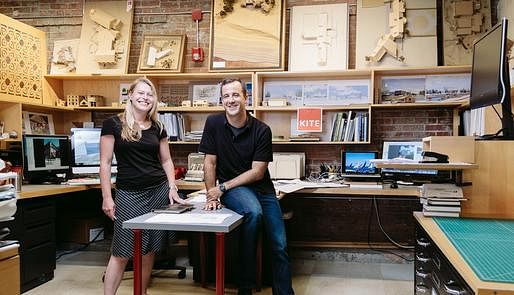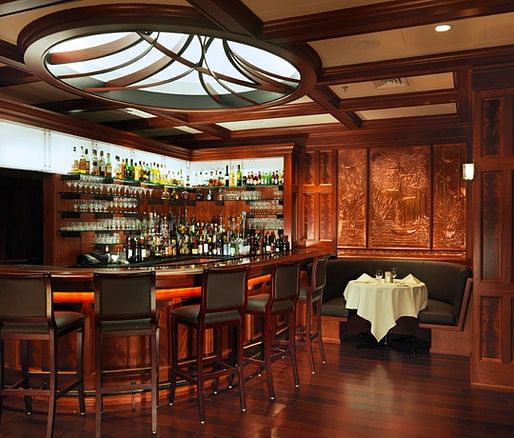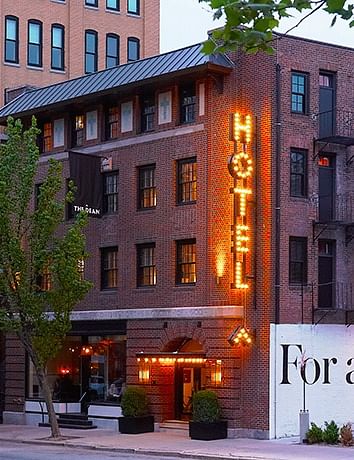

This week, Modelo had the pleasure of interviewing Christine M. West and Albert J. Garcia. West and Garcia are the Principals of KITE Architects Inc. The firm is based in Providence, Rhode Island and serves all of New England.
On the beginnings of KITE:
CW: KITE has had a presence in New England for over forty years, and has a legacy of quality, community-based design that attracted both Albert and I. The firm has its roots in institutional work from universities to non-profit organizations, as well as a strong history of residential projects, with a focus on craft. I personally was looking for an opportunity to do more with community-oriented and “green” design, as well as working in urban environments that were enabling density as a means to a more sustainable future. We’ve been very fortunate to steer our work in that direction.
AG: Christine and I started working together about 13 years ago when we both came to Providence and started working at KITE. We immediately found our working style was very compatible and complementary. We became owners in 2008, and after the retirement of our founding partner now operate as a partnership alongside a group of very talented architects and designers. We also share a commitment to doing non-profit work. Responsibility to take on projects that contribute to the greater good is a key part of our practice
On their roles:
CW: Albert and I have an interesting dynamic — we are opposites in a lot of ways but we see eye-to-eye on the end results. We consult each other on just about everything, and where there’s a rare conflict of opinion, we have to understand each other’s rationale. If we can’t convince each other there’s no way we can convince a client!
On their clients:
CW: Our best clients are the ones who have that spark, that desire to do something great and aren’t afraid to innovate. They will often find us through word of mouth or conversations about issues affecting our city. I’m involved in a lot of volunteer and civic activities and that keeps me plugged into what is happening locally.

University Club Bar, Courtesy of KITE Architects — Photo by Nat Rea
On client communication:
AG: To show clients our work, we try to match the medium to what we are trying to communicate. Hand sketches and physical models can be really important to show a feeling, but as the design becomes more advanced, everything from Sketchup models to axonometric drawings right from Revit is appropriate.
On their design philosophies:
AG: For me architecture is truly a fusion of function, performance and craftsmanship. When it’s done well you know it. It looks effortless, timeless, unforced and naturally beautiful.
CW: The moment I discovered that architecture could be about making places for people was when I got truly excited about it. This continues to be a guiding inspiration. The intricacies of how design moves both big and little can help shape people’s experiences quickly leads from a very social orientation into one of space, materials, and even logistics.
On discovering their voices as designers through life experiences:
AG: As an art major at Williams College and my study of architecture at University of Pennsylvania I developed a very hands-on design process that oscillates between intuitive and analytical. My career as an architect grew organically from my study of art history, printmaking, sculpture, and most of all a passion for drawing and sketching.
AG: It’s a constant search for the right balance between personal and professional interests. As a father of two girls, competitive swimmer and coach, business owner, husband of a full time working clinical psychologist, I wear many hats through the course of any given day. I believe this gives me insight and a better understand the complex dynamics we are working to understand and respond to with our designs, in particular with our residential projects.

Dean Hotel, Courtesy of KITE Architects — Photo by Christian Harder
CW: Over the years I have found that I prioritize providing exceptional service to the client over self-motivated interest and architectural ambitions. With any creative endeavor done for a paying client (and it seems with architecture in particular) this is an important concept that is often forgotten. At the end of the day, we care that the client is as happy with the process as well as the end product.
CW: I was fortunate to study as an undergraduate under Vivian Loftness at Carnegie Mellon, an early pioneer of sustainable design, who impressed a basic point of view upon me that is relevant today. Mid-career, I was frustrated by some fundamental obstacles in the way of adopting green building in a small-sized practice, and went to graduate school at the GSD to search for ways to remove those obstacle. Most of the schools at that time approached sustainable design strictly from a building science approach without understanding the economic or social implications, and I learned a lot that influences our work now.
On their favorite part of the design process:
CW: I find the early stages of planning a project, where we are connecting people and opportunities and really starting to shape the needs and goals along with the architectural direction, is thrilling. However both Albert I came to KITE because I had a deep respect for how the essence of a detail and how it is developed is critical to the overall integrity of the design, and we return to that over and over in our practice.
On the tools and software they use:
CW: I’ve been a Sketchup fan from its earliest days and still find that to be a facile way to explore designs, probably because I grew up with computers. We use Revit, but 2D tools like Photoshop and illustrator are valuable.
AG: The task dictates the tools. When we are hiring, we look for people that have exceptional hand-drawing ability, as well as facility with software and digital tools. It speaks to a designer’s ability to express themselves visually, and that will translate to whatever technology follows next.
CW: As our digital tools evolve, allowing the client to have the kind of real-time collaborative experience that is productive is becoming easier, but this comes with risk — does the client truly know what they’re seeing, or have the experience to make the decisions we’re asking them to make? Nothing will substitute for the judgment of the professional, but our clients have a valuable point of view that we need to find a way to include. We also are just beginning to see architectural renderings that convey mood and imagery, and life beyond the summertime sunny-day picture. Allowing greater artistry and a vagueness to exist to allow the imagination to roam could be a healthy next frontier for rendering and design software.
On what makes KITE unique:
CW: Much of what sets us apart is our process, and our patience with finding the creative opportunity in each project. We do not specialize in one type of building, and that means we are frequently seeing things with fresh eyes and asking questions no one has asked before. Some of our best work has come out of suggestions that frankly astonished our clients at first, but quickly became the obvious direction.

URI Wellness Center, Courtesy of KITE Architects — Photo by Albert Garcia
On their recent projects:
CW: For example at URI for their new Wellness and Fitness Center, we were asked to cover an ugly 1960’s building with EIFS — but it was a Progressive Architecture award winning design by Pietro Belluschi, and to us, a future historic building. So we set out to uncover the underlying gestures, and proposed selective additions that honored that, new glazing that polished the image, and a dramatic entry that capitalized on a beautiful pond that had been neglected. We hired a mason to analyze and repair the terra cotta blocks that were non-structural infill, and added new portions with the contemporary terra cotta rainscreen panels. By allowing the building’s roots to inspire us, we were able to showcase it’s hidden beauty and create an exciting and beautiful new place for students.
On what makes a successful firm:
AG: A successful firm is one that has integrity, and is willing to work toward the right solution, not necessarily the easiest — but that right solution also has to be the best one for the client and the community.
On their dream project:
CW: Any project that has a positive impact on people’s lives, on the city, and that enhances how we live is pretty awesome.
On the future of architecture and KITE:
CW: What we’ve seen in other arenas is that people have an unprecedented ability to create and customize their own experiences, and easily access the technology and communication tools to make that happen. I think this is in opposition to the very prescriptive and static view of the world that architecture has always enjoyed — and that architecture needs to be more open to flexibility, change, and user-driven.
AG: Also we live in a new golden age of urbanism, and people today have a startling level awareness of what makes more vibrant cities, and development is responding to that with better streetscapes, mixed-use projects, and more carefully planned density. This is where KITE can really shine, and it will be a big part of our future work.
At Modelo we want to know what drives the world’s design and architecture talent. This is why we invite select architects and designers to share their stories, philosophies, visions and favorite works with the public — their manifestos. For more information on how we're working to change the architecture and design world at Modelo please visit us at: www.modelo.io.
No Comments
Block this user
Are you sure you want to block this user and hide all related comments throughout the site?
Archinect
This is your first comment on Archinect. Your comment will be visible once approved.